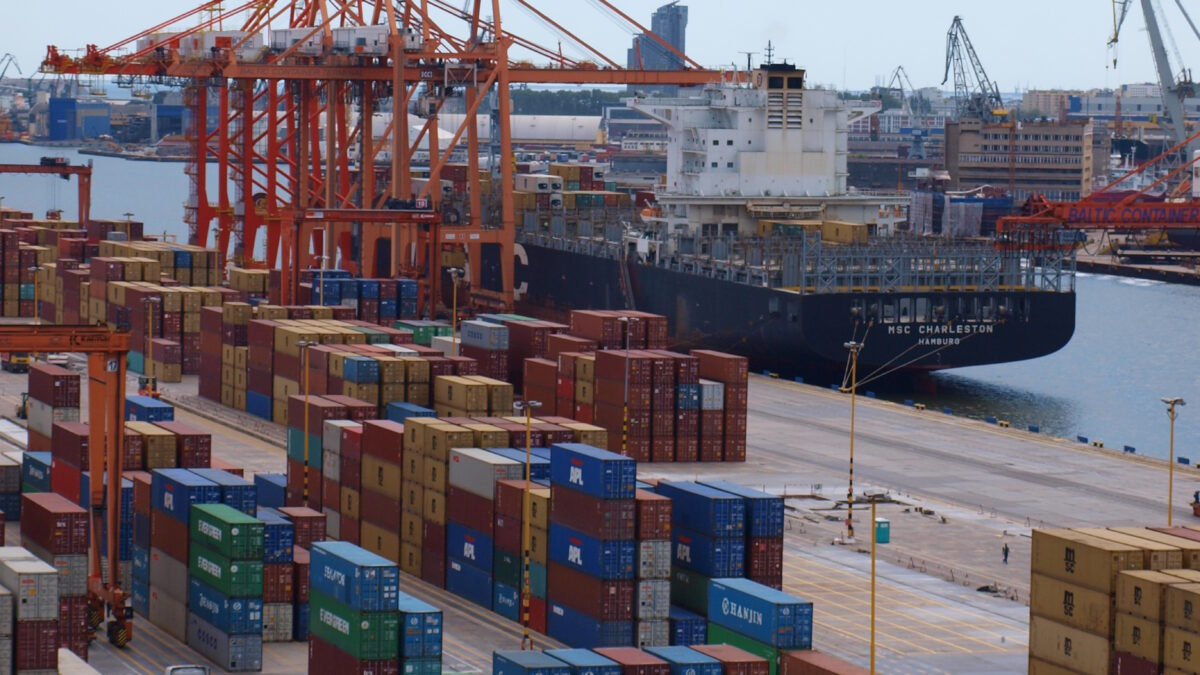
Step in the right direction
29 August 2024
Virtual battle with tangible consequences
13 September 2024Polish container terminals ended the first half of 2024 by handling 1.556 million TEUs, a 7.7% increase over the same period last year. Thus, it can be very cautiously claimed that the market has made up for the loss of 2023 and once again reached the level of transshipments in 2022, when the first-half result was 1.585 million TEUs.
The first quarter of the year was marked by pronounced volume fluctuations. After relatively poor January results, the terminals had record results in February, only to see declines again in March and April. In the second quarter, however, there was a clear upward trend, with the total number of units handled rising from 241,000 TEUs in April to more than 277,000 TEUs handled in June.
If we consider the terminals excluding the Baltic Hub, the growth in the half-year was primarily due to increased import transshipments. The number of containers accepted at storage yards was almost 23% higher than in the first half of 2023. Such a change seems impressive, but at this point it should be added that in the first half of 2023 the same indicator fell by a similar amount (24%) compared to 2022. Thus, comparing the 2022 and 2024 halves, we are still talking about a 5% adjustment in transshipments. Noteworthy, growth was stimulated primarily by imports (22%) while exports basically remained at a similar level.
Of the terminals surveyed, the largest increase over last year was recorded by OT Port Gdynia, where transshipments increased by 28% over 2023 and by 10% over 2022, respectively. At the other end of the list was DB Port Szczecin. The result of 35,000 TEUs handled for the terminal represents a decline of 7% from last year and a leveling off of transshipment levels relative to 2022.
The Baltic Hub in Gdansk experienced similar change dynamics. The handling of 1,071 thousand TEUs represents a 7% change for the largest terminal compared to last year. Thus, the terminal approached the level of transshipments from H1 2022. The investments being made at the terminal therefore seem justified. In addition to the already advanced construction of the T3 terminal, the Baltic Hub in July announced a tender for the expansion of storage yards within the T2 quay. The T2D project is expected to cover an area of 6.5 hectares inland, along Kontenerowa Street.
BCT, on the other hand, handled 267,000 TEUs in the first half of the year, which is slightly more than 4% more than last year. However, it was about 15,000 TEUs short of equaling the level of transshipments 2 years ago. Interestingly, BCT increased the volume of containers received by a third, while export cargoes fell by 10%. This primarily reflects the weaker position of Polish exporters, dictated by the global economic situation, the strengthening zloty and rising production costs. On the other hand, the rapid growth of imports at BCT indicates geographic diversification of purchases, as direct services calling at the terminal connect Gdynia with the Middle East, the Indian Peninsula, or the US.
Neighboring GCT ended the six-month period with nearly 18,000 TEUs handled, recording a 20% increase over last year. This is a noteworthy result, given that the second half of 2023 and the beginning of 2024 were turbulent times for the terminal. The departure of a major customer – shipowner CMA CGM, the handling of Maersk Line vessels and the launch of the short sea service of shipowner Ellerman have brought positive results in transshipment statistics. Slightly higher dynamics were recorded in the area of exports (23%), while imports grew by less than 18%. It is also worth noting that the GCT terminal was least affected by the transshipment fluctuations occurring in the first quarter of the year.
OT Port Gdynia, in addition to having the highest growth rate relative to 2023, was the only one to also show growth relative to 2022. The smallest of the analyzed terminals also based its growth on import transshipments, which increased by 44% against 2023. Export transshipments grew slightly less, by 8% per terminal. In addition, the number of empty units increased among export units, with a decline in loaded units, which further shows the ongoing weakening of the Polish export sector.
DB Port Szczecin handled 35,000 TEUs in the period under review, so it was the only one of the terminals to record a decline in transshipments. In doing so, it showed a trend completely opposite to that of the Tri-City terminals. After an increase in 2023 transshipments to 37.6 thousand TEUs, it has returned to 2022 transshipment levels. In Szczecin also, in contrast to the Tri-City terminals, the trade statistics are fairly evenly distributed. For exports, the decline was 8%, while imports shrunk by 6%. At the same time, information from the market allows us to look quite optimistically at the second half of the year. According to operator P&O Ferrymasters, Szczecin will be enriched with a connection to Helsingborg, Sweden, which will undoubtedly contribute to increased transshipment at the DB terminal.
It can therefore be cautiously assumed that 2024 will be a time for the market to make up for last year’s declines in transshipments. The recovery recorded in the second quarter of the year and the Polish Economic Institute’s forecasts of an increase in consumption relative to last year of about 3%, as well as the expected increase in investment, associated with the release of funds from the NIP, seem to further confirm the aforementioned thesis. Moreover, if the trend continues, at the end of the year we can expect results significantly higher than those projected globally by UNCTAD/UN, which further allows for moderate optimism for the second half of 2024.





